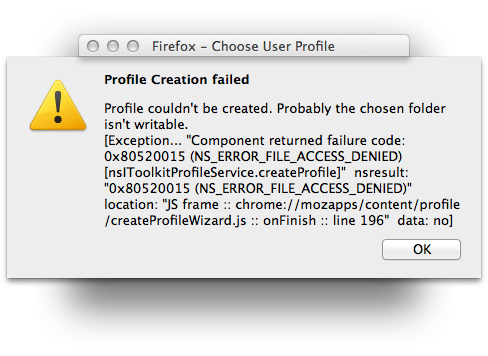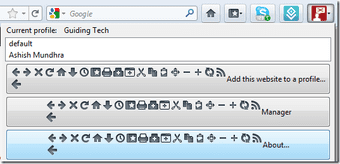
- WORKING WITH FIREFOX PROFILE MANAGER HOW TO
- WORKING WITH FIREFOX PROFILE MANAGER MANUAL
- WORKING WITH FIREFOX PROFILE MANAGER PORTABLE
Proxy servers can be configured from the corresponding tab, advanced settings include changing the computer name, changing the workgroup name and possibly a unique feature of allowing MAC spoofing on the network adapter. TCP/IP Manager was quite reasonable on memory usage consuming around 4MB while sitting in the tray. Finally click Save current profile. When you want to launch a profile click Apply in the window, press the hotkey combination or select from the tray icon context menu. Optionally go to the Profile settings tab and choose to show the profile in the tray menu and give it a keyboard shortcut so you can launch the profile by a key combination. Automatic options are also available like in Windows. Choose a network adapter from the drop down and configure the IP address, subnet, gateway and DNS servers. Make sure to get the correct 32-bit or 64-bit version for your system.Īfter launching the program click Create a new profile and give it a name.
WORKING WITH FIREFOX PROFILE MANAGER PORTABLE
The program is open source and available in both setup installer and portable versions. TCP/IP Manager has a good mix of the ability to easily save network settings into a series of profiles and enough features and functions to cater for most users. Here are 5 free tools for you to create and apply network profiles. When you need to change to a different network, a different profile can easily be applied which changes all the required settings automatically. It requires you to remember each individual setting or the network might not connect properly. An easy solution is being able to create different network profiles for different scenarios, so you can save IP address, DNS, default gateway and other settings for each network connection you encounter.

WORKING WITH FIREFOX PROFILE MANAGER MANUAL
Manual reconfiguration each time through Windows Network Connections is both time consuming and inefficient. While this isn’t a major problem because Windows allows you to change these types of settings, it isn’t the quickest thing to get at and change regularly. At home you might use a WiFi connection with default or automatic settings, for work you might have a manually set IP address and gateway or custom DNS servers. Each different network configuration you come across requires the settings in Windows to be adjusted to match. Smaller and better JavaScript solution profile = webdriver.FirefoxProfile()ĭriver = webdriver.Every home or work network you connect to can conceivably have different settings for the connection. But thanks to who provided a far easier JavaScript for the same This is bit complex than I would have wanted it to be. Set_string_preferce("", '/Users/tarunlalwani/Downloads2/')

t_preference("general.warnOnAboutConfig", False)ĭocument.getElementById("textbox").value = arguments Ĭurrent_value = view.getCellText(0, ) So my first attempt was to solve the problem using about:config UI interface profile = webdriver.FirefoxProfile()

This is good when you know the download folder while starting the browser or you are NOT interested in changing the download folder after the browser has starting. t_preference("", "application/x-gzip")ĭriver = webdriver.Firefox(firefox_profile=profile) t_preference("", '/Users/tarunlalwani/Downloads/')
WORKING WITH FIREFOX PROFILE MANAGER HOW TO
Below is a sample code on how to change the download folder of the browser launched from selenium import webdriver Selenium allows creating a custom profile for firefox and launching the browser with the same. Change firefox profile settings at runtime using selenium


 0 kommentar(er)
0 kommentar(er)
